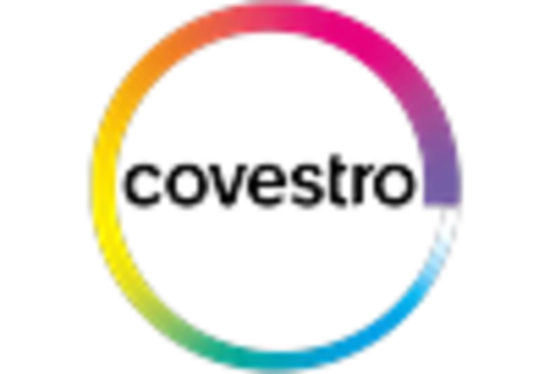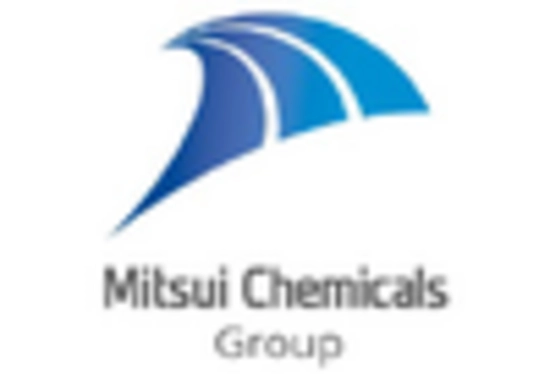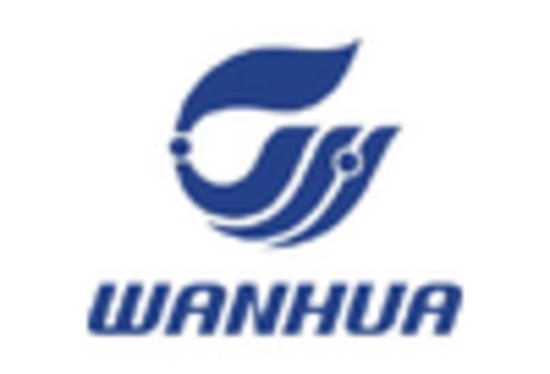Rising Demand in Automotive Sector
The automotive sector is experiencing a notable increase in the adoption of polyurethane composites due to their lightweight and durable properties. This trend is driven by the industry's focus on enhancing fuel efficiency and reducing emissions. In 2025, the polyurethane composite market is projected to witness a growth rate of approximately 6% annually, as manufacturers seek materials that can withstand harsh conditions while maintaining performance. The integration of polyurethane composites in vehicle components, such as bumpers and interior parts, is becoming more prevalent, indicating a shift towards innovative materials that offer both functionality and aesthetic appeal. As automotive manufacturers continue to prioritize sustainability and performance, the polyurethane composite market is likely to expand significantly.
Growth in Construction Applications
The construction industry is increasingly utilizing polyurethane composites for their superior insulation properties and structural integrity. In 2025, the polyurethane composite market is expected to grow as builders and architects recognize the benefits of these materials in energy-efficient designs. The demand for lightweight yet strong materials is driving innovation in construction applications, including roofing, flooring, and wall systems. The market data suggests that the use of polyurethane composites can lead to a reduction in energy consumption by up to 30%, making them an attractive option for sustainable building practices. As urbanization continues to rise, the polyurethane composite market is poised for substantial growth, catering to the evolving needs of modern construction.
Increased Focus on Renewable Energy
The renewable energy sector is becoming a significant driver for the polyurethane composite market, particularly in wind energy applications. The lightweight and durable nature of polyurethane composites makes them ideal for manufacturing wind turbine blades, which require materials that can withstand extreme weather conditions. In 2025, the market is anticipated to expand as investments in renewable energy projects increase globally. The polyurethane composite market is likely to benefit from the growing emphasis on sustainable energy solutions, with projections indicating a potential increase in demand for composite materials by over 15% in this sector. This trend reflects a broader commitment to reducing carbon footprints and enhancing energy efficiency.
Expanding Applications in Consumer Goods
The consumer goods sector is witnessing a growing trend towards the use of polyurethane composites, driven by their versatility and performance characteristics. Products ranging from footwear to furniture are increasingly incorporating these materials, which offer durability and aesthetic appeal. In 2025, the polyurethane composite market is projected to expand as manufacturers seek to innovate and differentiate their offerings. The lightweight nature of polyurethane composites allows for more efficient designs, which can enhance user experience. Market data indicates that the demand for polyurethane composites in consumer goods could rise by approximately 8% annually, reflecting a broader trend towards high-performance materials in everyday products. This expansion highlights the adaptability of polyurethane composites across various consumer applications.
Technological Innovations in Manufacturing
Technological advancements in manufacturing processes are significantly influencing the polyurethane composite market. Innovations such as 3D printing and advanced molding techniques are enabling the production of complex shapes and designs that were previously unattainable. In 2025, the market is expected to see a surge in the adoption of these technologies, which can enhance production efficiency and reduce waste. The ability to customize polyurethane composites for specific applications is becoming increasingly important, allowing manufacturers to meet diverse customer needs. This shift towards more sophisticated manufacturing methods is likely to propel the polyurethane composite market forward, as companies strive to remain competitive in a rapidly evolving landscape.


















Leave a Comment